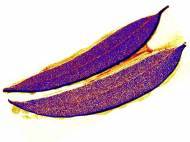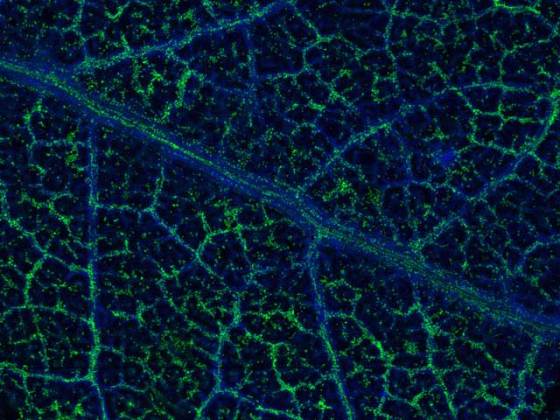Kalgoorlie eucalyptus trees absorb and store gold in leaves
 Commonwealth Scientific and Industrial Research Organization (CSIRO) researchers have discovered that eucalyptus trees in the Kalgoorlie region of Western Australia are absorbing gold particles from the earth via their root system and depositing it in their leaves and branches. This discovery could provide an opportunity for a more cost effective and environmentally friendly mineral exploration technique.
Commonwealth Scientific and Industrial Research Organization (CSIRO) researchers have discovered that eucalyptus trees in the Kalgoorlie region of Western Australia are absorbing gold particles from the earth via their root system and depositing it in their leaves and branches. This discovery could provide an opportunity for a more cost effective and environmentally friendly mineral exploration technique.
The eucalyptus trees act as a hydraulic pump, because their roots extend tens of meters into the ground and draw up water that contains the gold. The absorbed gold is toxic to the plant, so it’s moved to the branches and leaves where it can be released or shed to the ground. The trees can take up small amount of gold, hence the gold grains are about one-fifth the diameter of a human hair.
“We’ve discovered that gold grains are growing within the leaves of the eucalypt trees. Now this actually tells us something about the environment in which the trees are growing, in the case of the gold growing in the leaves it tells us that there is a gold deposit beneath where we’re standing”, said Mel Lintern, CSIRO geochemist.
The leaves or soil underneath the trees could indicate gold deposits buried up to tens of meters underground and under sediments that are up to 60 million years old.
“By sampling and analyzing vegetation for traces of minerals, we may get an idea of what’s happening below the surface without the need to drill. It’s a more targeted way of searching for minerals that reduce costs and impact on the environment”, said Lintern.
By means of the Maia x-ray microprobe elemental imaging system, the researchers located the gold in the eucalyptus tree’s leaves. They examined the leaves and produced clear images of the traces of gold. Nuggets of gold are tiny and undetectable by other currently available techniques and equipment.
The technique can be used to find other metals such as zinc and copper. According to the CSIRO researchers, exploration companies that sponsored the research and had early access to the results were already sampling leaves for gold. Eucalyptus trees are common in Australia, so this technique could be widely applied across the country.
For more information, you can read the paper published in the journal Nature Communications: “Natural gold particles in Eucalyptus leaves and their relevance to exploration for buried gold deposits” [1.3MB PDF].










Leave your response!